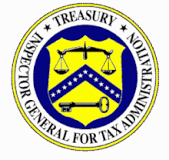According to TIGTA'S Final Report issued on May 31, 2019, few accuracy-related penalties are proposed in LB&I examinations and they are generally not sustained on appeal.
Highlights of Reference Number: 2019-30-036 to the Commissioner of Internal Revenue.
IMPACT ON TAXPAYERS
Taxpayers who underreport their income tax may be subject to accuracy-related penalties (Internal Revenue Code Section 6662). The penalty is generally 20 percent of the underpayment of tax that is due, and in certain cases, the penalty may be 40 percent. If the IRS does not properly consider and propose the accuracy-related penalty, taxpayers may be treated inconsistently and unfairly, undermining tax system integrity and diminishing voluntary compliance.
WHY TIGTA DID THE AUDIT
The largest part of the Tax Gap results from taxpayers who underreport their income, accounting for $387 billion, or about 84 percent of the IRS’s 2008 through 2010 estimated gross Tax Gap. This audit was initiated to determine whether accuracy-related civil tax penalties in the Large Business and International (LB&I) Division are properly considered and proposed.
For Fiscal Years 2015 through 2017, TIGTA reviewed IRS databases for closed LB&I business return examinations and identified 519 examinations in which LB&I examiners proposed accuracy-related penalties totaling $1.8 billion. The Office of Appeals worked and closed 195 appealed examinations totaling $773 million in proposed penalties that ultimately resulted in the elimination or reduction of the proposed penalties for 183 returns totaling $765 million.
IRS systems also identified 4,600 LB&I business return examinations that resulted in additional tax assessments greater than $10,000, for a total of $14 billion of additional tax due. Of these 4,600 returns, only 295 returns (6 percent) had accuracy-related penalties assessed.
 IRS policy requires examiners to identify the appropriate penalties, determine whether to propose penalties, document the reasoning for proposal or nonproposal, involve supervisors in penalty development, and obtain supervisory approval for the proposal of all penalties and for the nonproposal of the substantial understatement penalty.
IRS policy requires examiners to identify the appropriate penalties, determine whether to propose penalties, document the reasoning for proposal or nonproposal, involve supervisors in penalty development, and obtain supervisory approval for the proposal of all penalties and for the nonproposal of the substantial understatement penalty.TIGTA’s review of a stratified, statistical sample of 50 business tax returns examined by the LB&I Division with additional tax assessment greater than $10,000 and no accuracy-related penalties assessed showed that:
- in 10 cases (20 percent), examiners did not consider the accuracy-related penalty;
- in 10 cases (20 percent), examiners did not justify their decisions not to propose the penalty;
- in 13 cases (26 percent), there was no indication that the supervisor approved the decision not to propose the penalty; and
- in 13 cases (26 percent) with substantial understatements of income tax, there was no indication of supervisory involvement in penalty development.
In addition, TIGTA’s review of a stratified statistical sample of 50 business tax returns examined by LB&I examiners with accuracy‑related penalties assessed showed that:
- in four cases (8 percent), there was no indication the supervisor approved the decision to propose the penalty, and
- in three cases (6 percent), there was no indication that supervisors were actively involved with the development of the penalty issues.
WHAT TIGTA RECOMMENDED
TIGTA made several recommendations to the Commissioner, LB&I Division, to help improve examiners’ accuracy-related penalty decisions. The IRS agreed with four of five of our recommendations. Management partially agreed one recommendation.
Contact the Tax Lawyers at
Marini & Associates, P.A.
for a FREE Tax Consultation contact us at:
Toll Free at 888-8TaxAid (888) 882-9243
Read more at: Tax Times blog







